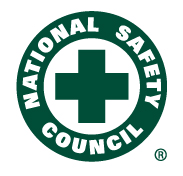Accidental Deaths Increasing at Alarming Rate Poisonings, Overdoses Seeing Greatest Gains
Published 09-21-07
Submitted by National Safety Council
ITASCA, IL - September 21, 2007 - Accidental deaths in the United States are rising at an alarming rate, more than 20 percent over a 10-year period, reaching 113,000 deaths in 2005, according to the latest data available. The National Safety Council (NSC) warns that at the current rate, the nation's all-time high of 116,385 accidental deaths, set in 1969, could be surpassed in the next few years.
For people between 1 and 41 years of age, accidents are the leading cause of death in the nation. While accidents continue to be the 5th leading cause of death overall, exceeded only by heart disease, cancer, stroke and chronic lower respiratory diseases, accidental deaths are increasing at a greater rate than that of any of the top four causes of death.
"Accidental death in America is a silent epidemic. With one person dying from an accident every five minutes, unintentional injury is one of the most serious public health issues facing the country," said NSC President and CEO Alan McMillan. "Trauma from accidents follows only heart disease and cancer in national medical expenditures. For people between the ages of 18 and 64 with private health insurance, more is spent on medical care for trauma and poisoning than for any other health condition. The economic and social impact is substantial for families, communities, employers and the health care system."
According to data released today by the NSC to mark National Safety Month, motor vehicle crashes continue to be the leading cause of injury-related death in the country. Driver behaviors including speeding, distractions and impairment, as well as not wearing seatbelts, contribute significantly to motor vehicle injuries and fatalities.
Poisoning - particularly from overdoses of over-the-counter, prescription and illicit drugs - is now the fastest-rising cause of accidental death with a 5 percent increase last year alone. While the largest numerical increase in overdoses is among white men - up nearly 6,000 in 10 years - poisoning death rates are increasing the most among white women - up more than 300 percent over 10 years.
Deaths from falls rank third, with choking and drowning rounding out the top five. These five leading causes account for 83 percent of all accidental deaths.
A state-by-state review shows that unintentional injury is the third-leading cause of death in Alaska, Arizona, Mississippi, New Mexico and the District of Columbia; it ranks fourth in 18 states, and sixth in Maine, Maryland, New Jersey and New York. While drowning was the fifth-leading cause nationally, most states ranked fire as the fifth-leading cause of accidental death.
Another disturbing trend is the shift toward more accidental injuries and deaths occurring in and around the home. Since 1992, the death rate from injuries in home and community settings increased 30 percent. In fact, more than half of all injury-related deaths and 75 percent of all disabling injuries are occurring in our homes and communities. Conversely, over the same period of time, the death rate for workplace injuries has declined 17 percent and the death rate for motor vehicle collisions, while still unacceptably high, is down 16 percent. "Shifts in national demographics, changes in our workplaces, and a proliferation of mobile technologies are dramatically affecting the nature and scope of the country's 21st century safety and health risks," said McMillan.
Accidents also accounted for more than 24 million nonfatal injuries in 2005, putting major stress on our nation’s health care system. The economic cost of all fatal and nonfatal injuries amounted to $625.5 billion nationally, or $5,500 per household.
"Our research shows that when it comes to safety, most Americans are more concerned about being the victim of a random act of violence than they are about being seriously injured in an accident," said McMillan. "The reality is that while we are at greater risk of experiencing an accidental injury, we have greater control over managing those risks."
The National Safety Council promotes National Safety Month as an opportunity to increase awareness of our risks of injury and to encourage groups nationally and at the local level to come together to promote safe and healthy behaviors throughout the year.
"The leading causes of accidental injury and death in this country are all preventable," McMillan said. "We know from research that awareness plays a huge role in reducing the risk of injury and that changes in behavior and basic preventive measures can save lives. We also know from experience that by coming together - as safety leaders, government officials, employers, municipalities, community groups and individuals - we can reverse these disturbing trends and, by doing so, save billions of dollars and thousands of lives."
The National Safety Council is a nonprofit, nongovernmental, international public service organization dedicated to protecting life and promoting health. Council members include more than 45,000 businesses, labor organizations, schools, public agencies, private groups and individuals. Founded in 1913 and chartered by the U.S. Congress in 1953, the Council's primary focus is preventing injuries that occur in workplaces, homes, communities and motor vehicles. For more information, visit the Council's Web site at www.nsc.org.

National Safety Council
National Safety Council
The National Safety Council is a nonprofit, nongovernmental, international public service organization. Members of the NSC include businesses, labor organization, schools, public agencies, private groups and individuals. Founded in 1913 and chartered by the U.S. Congress in 1953, the National Safety Council is committed to preventing accidental injuries in the workplace, on roads and highways, and in homes and communities.
More from National Safety Council

